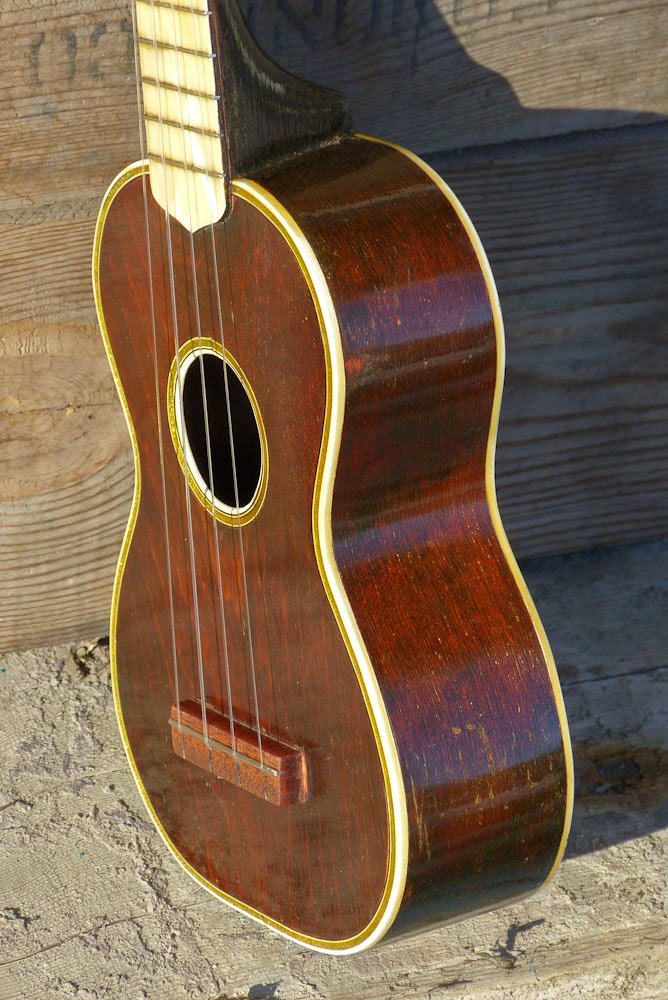1920s Oscar Schmidt Sovereign Soprano Uke
Fun, huh? This is a customer's uke that was in for repair. It's definitely 20s in vintage and definitely sweet in the looks department. Despite an all-birch build it has gussied-up gold-fleck purfling, plenty of celluloid on the board and headstock, and big old binding. A feast for the bluesy senses!
It got a bridge shave and mod, fret level/dress, new nut, replacement mid brace, and a good setup. I also filled in some minor separations between the binding and back on the rear. Compared to a lot of Schmidt ukes, the top is a lot thinner and so this one sounds clean and sparkly in that usual OS way but a lot fuller and louder than average. All plus!
The uke is all-original save an older replacement mahogany bridge. It's also more-or-less crack free with the only one I'm seeing being a tiny hairline
Blue stenciled script is typical of Sovereigns from the time.
While celluloid fretboard veneer looks lovely, it can be a righteous pain in the butt. This stuff had curled up (to the same level as the frets) in a number of places and it was a bit frustrating (as usual) to get it glued-down and stable.
Thankfully, the frets were all stable and held nicely into the wood fretboard beneath the celluloid. I'm wondering if someone had used steel strings on this uke in the past, however, as there was a bit of wear in the first 5 frets under the G&C string locations.
Check out the gold-fleck purfling...! Here's a Sovereign guitar with the same.
What you don't see, here, is the new lightweight brace just below the soundhole. I cut it similarly to the originals to keep it in-spec.
The mahogany bridge, as stated, is an old replacement. It was a bit too tall and the saddle wasn't located exactly "true." The solution: shave it and convert it to a fret-saddle bridge. Works fine!
I tend to "slot" under the strings on my fret saddles to keep the strings from "zinging" if you bang them too hard on a strum. Just a suggestion. I often lightly notch classical guitar saddles, too, for the same reason. Low tension = more movement across the saddle by accident.
The original Grover Champion pegs are still kickin' -- though they're not my most preferred old friction tuner design as they can "stick" a bit more in changing weather.















Comments